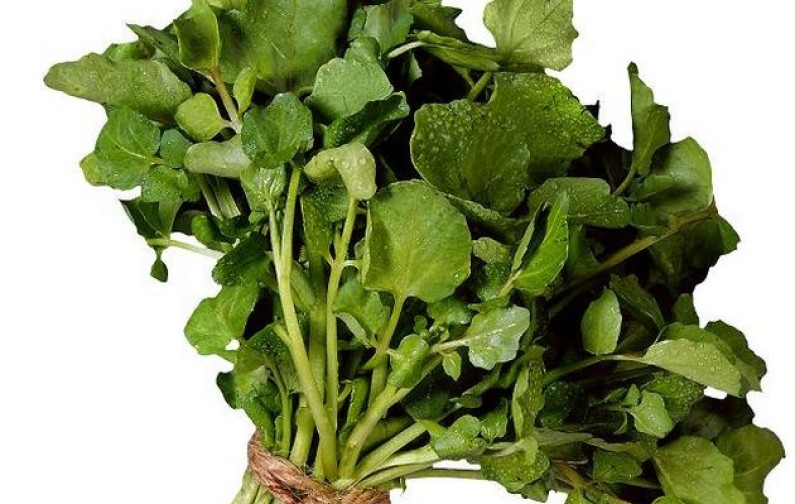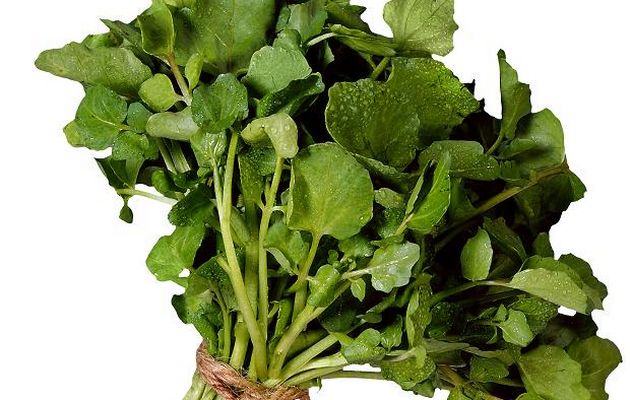

First it was broccoli. Then spinach. Then kale, something most people were acquainted with only because it was the curly green garnish separating cuts of meat in the butcher’s case. And then, just as Chard (Swiss or Rainbow or Rhubarb varieties) was sneaking up as the number one green to eat to promote good health, a new list has appeared proclaiming the very best green you can eat for optimal health is….watercress.
It’s not just for your English High Tea sandwich anymore.
We have long known (because we have long been told) that a healthy diet must include a significant number of servings of fruits and vegetables per day. Granted, that “significant” number is as subject to change as the Food Pyramid and its recommendations but it seems safe to say that the more plant-based foods we eat, the healthier we will be. Scientists and nutritionists continue to examine the foods we eat to determine which are the most packed with necessary vitamins and minerals and antioxidants, which are most effective against chronic diseases, and which provide the most benefits to our overall good health. According to this recent list, watercress takes first place because it is the vegetable that contains the most nutrients per calorie.
There are 40 “Powerhouse” fruits and vegetables on this list, ranked from best to…well, obviously not “worst” but not as good as the one above it. The top ten are: Watercress, Chinese Cabbage, Chard, Beet Greens, Spinach, Chicory, Leaf Lettuce, Parsley, Romaine and Collard Greens.
It’s good to see Spinach remains in the top 5 because we’ve been eating it ever since we were first told how good it was for us. What is not so good to see is where other so-called “powerhouse” vegetables fall of this list: Kale at 15, Broccoli at 19, Brussels Sprouts at 21, Cabbage at 25 and the much aligned Iceberg lettuce several spots above the revered Sweet Potato.
Obviously, this new list poses a whole new list of questions:
Why is Chinese Cabbage more beneficial at the number 2 spot than Cabbage (presumably red or green) at Spot 25?
After years and years of being told that vegetables with deep color are so much more healthy than those with little color, how is it that predominantly white iceberg lettuce—full of water and very little nutrients—is higher on this list than the vibrant and vitamin-fortified sweet potato?
Do we buy the beets just to get the greens?
Fruits seem to have lost their prominence, probably because they contain a lot of sugar, but how is it that blueberries–hailed for so long as the best antioxidant–aren’t even on this list?
The problem with this information is obvious: you can arrive home with your canvas shopping bag full of Kale, turn on your radio or television while you’re putting your groceries away, and discover that what you should have filled your bag with Cress and Chinese Cabbage. And further complicating the problem is just when you’ve learned how to steam, sauté, stir fry and braise kale, you are confronted with a whole new arena of greens that you have no idea how to cook.
While all of this new information is important and useful and the ranking can guide us toward getting the most out of what we eat, it’s still hard to imagine that the dark leafy greens and cruciferous vegetables we’ve been eating—spinach, broccoli, cabbage, Brussels sprouts and, of course, kale—should now be replaced or at least augmented with watercress and Chinese Cabbage and Swiss Chard.
The good news? The way things are going, there should be a new ranking before all that cress you just bought spoils.
By Diane Goodman
Sources:
Prevention
WashingtonPost


